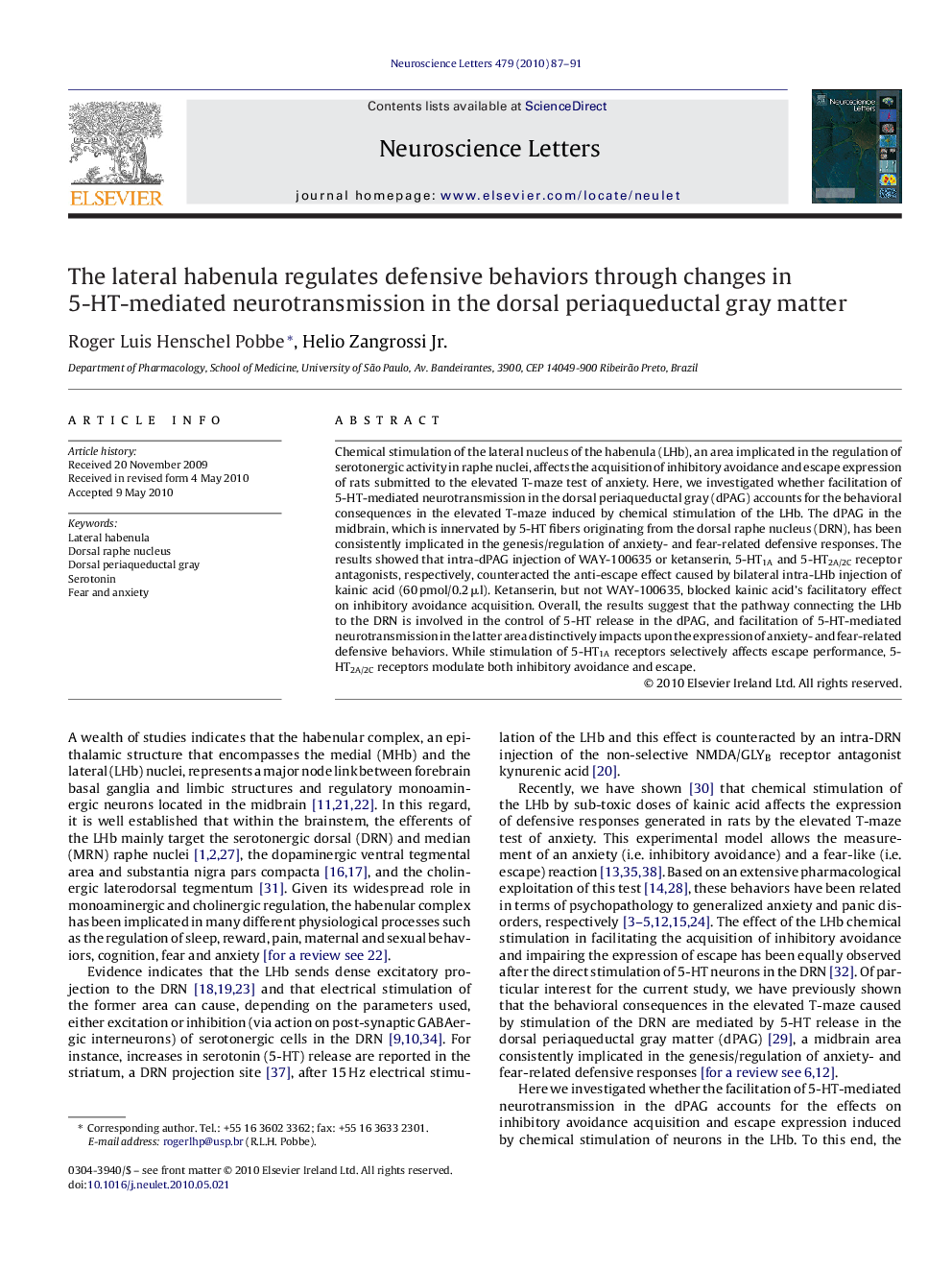| Article ID | Journal | Published Year | Pages | File Type |
|---|---|---|---|---|
| 4345710 | Neuroscience Letters | 2010 | 5 Pages |
Abstract
Chemical stimulation of the lateral nucleus of the habenula (LHb), an area implicated in the regulation of serotonergic activity in raphe nuclei, affects the acquisition of inhibitory avoidance and escape expression of rats submitted to the elevated T-maze test of anxiety. Here, we investigated whether facilitation of 5-HT-mediated neurotransmission in the dorsal periaqueductal gray (dPAG) accounts for the behavioral consequences in the elevated T-maze induced by chemical stimulation of the LHb. The dPAG in the midbrain, which is innervated by 5-HT fibers originating from the dorsal raphe nucleus (DRN), has been consistently implicated in the genesis/regulation of anxiety- and fear-related defensive responses. The results showed that intra-dPAG injection of WAY-100635 or ketanserin, 5-HT1A and 5-HT2A/2C receptor antagonists, respectively, counteracted the anti-escape effect caused by bilateral intra-LHb injection of kainic acid (60 pmol/0.2 μl). Ketanserin, but not WAY-100635, blocked kainic acid's facilitatory effect on inhibitory avoidance acquisition. Overall, the results suggest that the pathway connecting the LHb to the DRN is involved in the control of 5-HT release in the dPAG, and facilitation of 5-HT-mediated neurotransmission in the latter area distinctively impacts upon the expression of anxiety- and fear-related defensive behaviors. While stimulation of 5-HT1A receptors selectively affects escape performance, 5-HT2A/2C receptors modulate both inhibitory avoidance and escape.
Related Topics
Life Sciences
Neuroscience
Neuroscience (General)
Authors
Roger Luis Henschel Pobbe, Helio Jr.,
